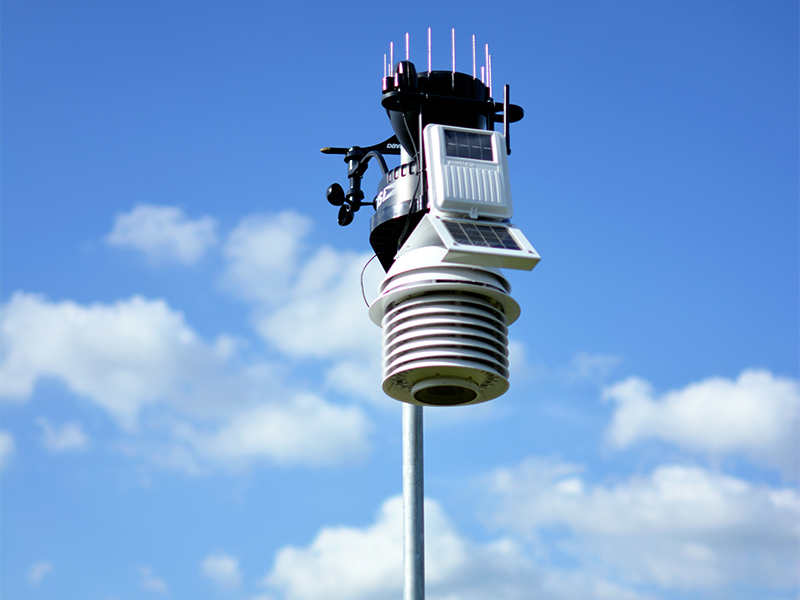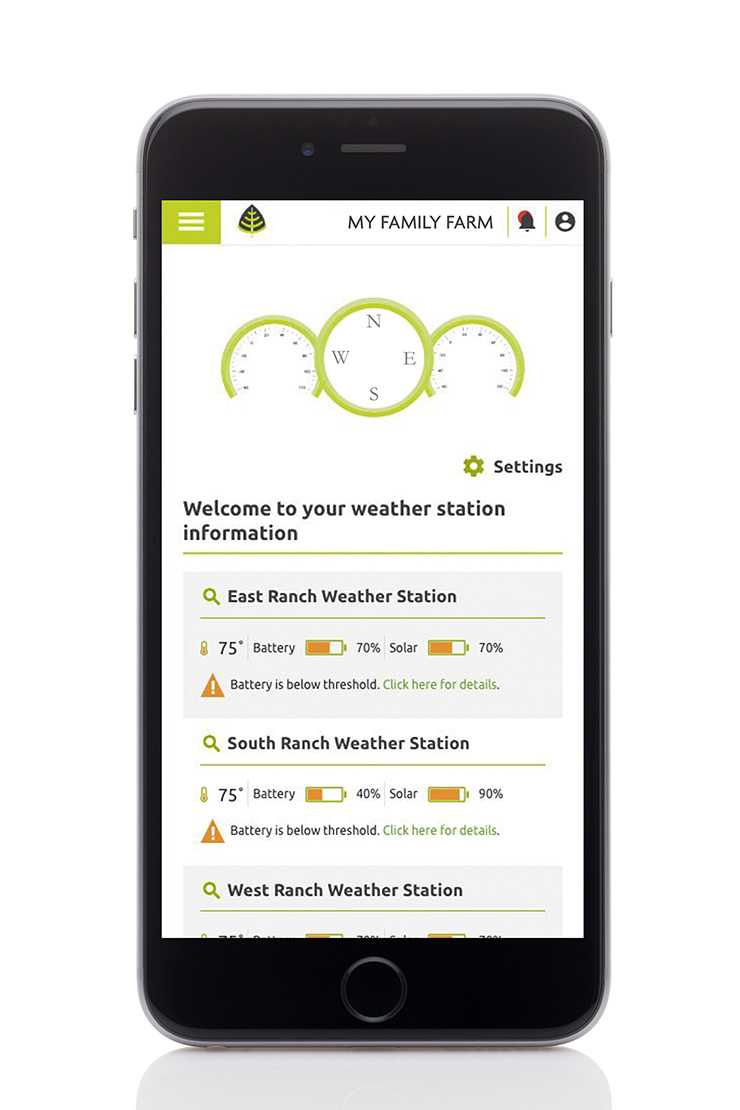The bane of any farmer’s operation is an unpredictable shift in weather that can harm one’s crop. From rains at harvest, to freezes during flowering, even the best predictive weather models cannot always account for inopportune weather. Farmers spend a decent portion of their time constantly observing the patterns of mother nature, in the hopes that they can provide themselves with even a few hours of additional lead time to make important management decisions. From water restrictions, impending floods, freezing temps, record heat, and a tight budget, growers all carry the same burden. A burden that real-time hyperlocal weather data can alleviate, providing farmers with an easy means to monitor rain, wind, and temperature.
Weather Stations are a Game Changer
Weather stations have come a long way in the recent years, now with another tier of station being available for growers. “The first class or level of equipment has always been for the universities and weather networks. These are the expensive stations,” says William Koos of KTS Wireless. “But with this second level, we now have a more affordable version for farmers that provide accurate data, lasting durability, and cellular connectivity at a good price point.”
These stations can be mounted on anchored tripods that allow for movement during or after a growing season as well as more permanent installations. They include sensors that accurately record temperature, wind speed and direction, rainfall, light intensity, and humidity. By adding an easy-to-use design, growers can log onto their account and see daily and weekly weather activity recorded by the weather station.

A Rain Gauge, Thermometer, and Anemometer in One
All of the sensors found on weather stations can play an important role in monitoring various aspects of weather. The rain gauge measures the rate of rainfall as well as the overall accumulation of rain. Temperature, humidity, and barometric pressure sensors can all be used to calculate wet bulb temperature used during frost protection. The anemometer calculates wind speed and direction, providing farmers with useful information about the direction and speed of storms, and the movement of air across a farm during cold spells. Farmers can use these sensors to aid in any number of management level decisions, such as a when to apply chemical controls or fertilizer, or when to harvest crops.
“Our interface allows for quick and easy understanding and implementation of the data from the unit,” says Anthony Machado, Equipment Sales for Highland Precision Ag. “and that data can be pushed to a cell phone every 15 minutes.”

Keeping up with Weather Makes a Difference
Here in Florida, the rain has been persistent. So, knowing exactly how much rain has fallen at each location has been vital to farmers. Through the Highland Hub, our customers are able to access their weather stations and view how the rain has affected soils and fertilizers throughout the root column. This helps them formulate a plan for when the sun finally decides to show itself.
To get this technology on your farm and for more details, contact Anthony Machado, Software and Irrigation Management Sales, 813-777-4423 or amachado@highcor.com